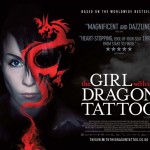Courtesy of the Observer (full review of the remake here):
In 1936 the Hollywood mogul David O Selznick bought the Swedish movie Intermezzo, signed up its star Ingrid Bergman and remade it in 1939 under the same title with Bergman repeating her original role in an otherwise British and American cast. During pre-production he sent a three-page memo to his chief producer about such adaptations. “I want to impress on you strongly,” he wrote, “that the most important saving to be effected in remaking foreign pictures – a saving that more than offsets the doubtful foreign markets that have been used up by the original version, and that makes these remakes uniquely desirable – is in the shooting, by actually duplicating, as far as possible, the [earlier] film.” And he added: “Granted a good cast, direction as good as Molander’s on the original, a somewhat faster tempo than his, for I think the pace is much too slow for an Anglo-Saxon audience, and some cuts – we can duplicate the picture.”
This is a review of the first movie adaptation of the first volume in the late Stieg Larsson’s renowned Millennium trilogy (he died aged 50, having written three quarters of a fourth novel in the series, which has not yet been given to anybody else to finish.) It’s also a blog on the practice of remaking movies in Hollywood, notably but not exclusively those in foreign languages. I could widen this further to think about the complicated business of adapting books into films so the essence is captured without translating every aspect of the rich soup of detail in cumbersome action, but maybe that can be left for another time – not least because I have yet to read Larsson’s much feted books!
Nevertheless, there is something I suspect the books and Swedish films share – a peculiarly Swedish cultural value set and terroir, in which characters are somehow part of the landscape. Just as the Swedish version of Wallender seemed somehow more credible by virtue of its authenticity, the whole mode of storytelling seems so very Swedish that any other imprint would lose the vital edge. More than that, the social and political perspective and undertone is almost entirely lost in uprooting the original, leaving it adrift from its moorings.
Selznick’s quote above demonstrates precisely the lack of empathy Hollywood routinely accords foreign films, though most of his successors have shown even less understanding, transplanting films to the US without a care in the world (the hideous remake of the wonderful Day of the Jackal, as The Jackal and removed from its French historical context, still gives me nightmares to this day!) The irony is that film noir cult movies routinely ignore his instructions and go at a pace appropriate to the style, rather than to meet the alleged expectations of the audience. Studio execs are cynical people, not much given to subtlety or respect for the movies that made their fortunes.
It’s worth noting that the original films of the Millennium trilogy follow the English translation of the books in the adoption of titles. The Swedish title is Män som hatar kvinnor (“Men Who Hate Women”), which reflects precisely the underlying theme of the trilogy. The object of the trilogy is Lisbeth Salander, a complex character with suppressed motivations that are gradually revealed across the three books/movies. As an actor, I can imagine the level of subtlety required to build, step by step, the layers of characterisation for such a sophisticated but vulnerable role as Salander, but Noomi Rapace pulls it off with aplomb.
Salander is initially a spiky punk, literally and metaphorically. She is bisexual, well trained in self-defence, an expert computer hacker and researcher, bright and sharp in her responses, but also guarded about giving away anything of herself. Her big black eyes staring forbiddingly back to her interlocutor. Without giving the plot away, we know in this first film that she is the victim of the most appalling and violent attack, which understandably fuels her hatred of men, but the darker side of her past is heavily hinted. Thoughtful but compelling direction by Neils Arden Oplen allows the truth to be revealed at a measured and appropriate pace, without becoming an overt screenwriter’s striptease.
Her counterpoint is Mikael Blomkvist (Michael Nyqvist), publisher of a radical magazine, Millennium, and as proceedings begin at any all-time low after being successfully sued for libel by an industrialist against whom he had made several accusations without having the standard of proof to justify in court. Salander, meanwhile is working for a security firm, commissioned by the retired head of a business empire, Henrik Vanger, to investigate the background of Blomkvist, whom Vanger subsequently hires to resolve the mysterious disappearance of his great-niece, missing for 40 years, in what amounts to a “locked room mystery on an island.”
As the plot unwinds, Blomkvist and Salander become increasingly involved with one another. Appropriately for the film and the trilogy, the relationship is ambitious. They are for a time lovers, but are more motivated by a mutual need to discover the truth behind Harriet’s disappearance. There is a grudging mutual respect, curiosity on the part of Blomkvist about Salander, and a growing affection that haunts him. To Salander, Blomkvist is at a first a convenient tool to be used, someone she can trust only in that he will not hurt or manipulate her, but the extent of her feeling for him is well disguised…. though she does him a favour at the end by exposing proof way beyond his expectations about the man who sued Blomkvist at the beginning.
The ambiguity of their largely unspoken relationship is the cornerstone of the trilogy – ultimately Blomkvist makes many sacrifices to protect Salander, though what he gains in return is unclear. Maybe American audiences expect a happy ending and dislike ambiguity, but the finely nuanced relationship is magnificently drawn and should not be wrecked to please focus groups. In fact, the acting is a joy to behold throughout this first movie, and indeed the trilogy. The actors, at home in their milieu, are thoroughly convincing from start to finish, though the denouement of the plot was a trifle silly in its application.
So finally, a small plea: try the subtitles! I like them, many don’t, but even if you don’t understand Swedish you can’t help but pick up the tone and emotion far better in the original lingo, with English at the bottom of the screen. Might take you two viewings, but with a film of this quality that is no sacrifice. Fair to say this is the best and most shocking of the trilogy but, much as the whole Harry Potter series is required to make sense of everything going on in each instalment, you really must watch all three to understand the big picture.






